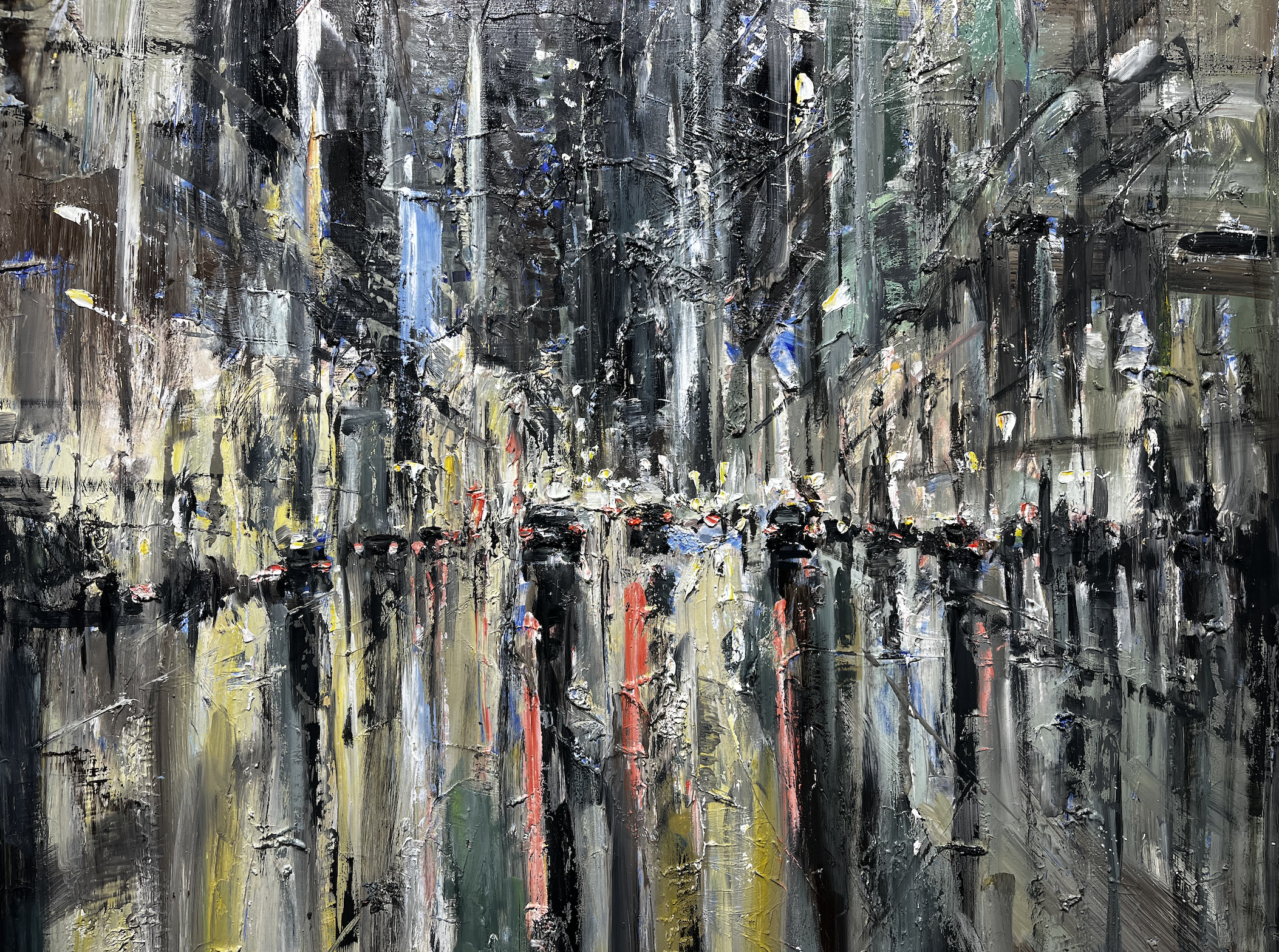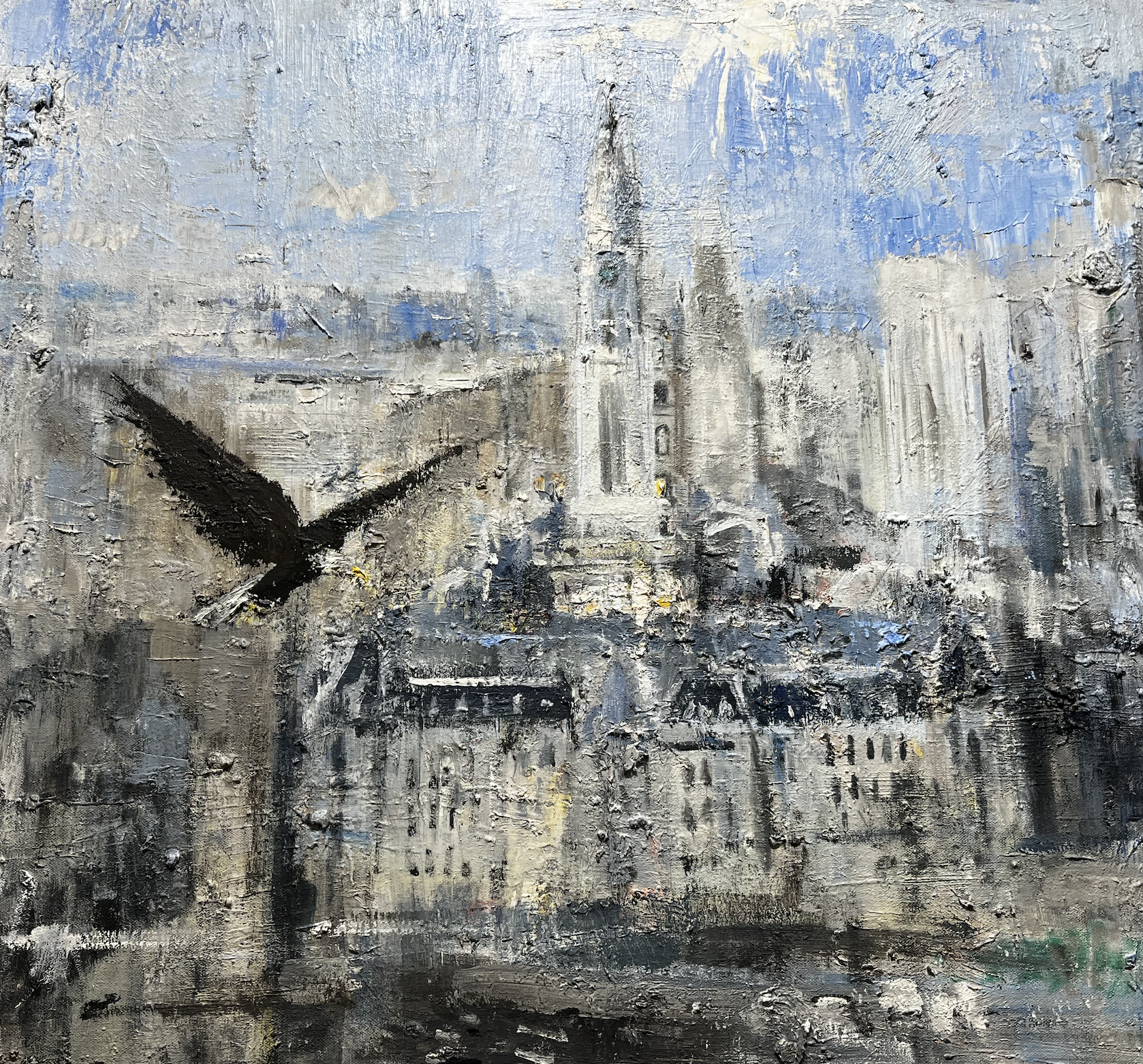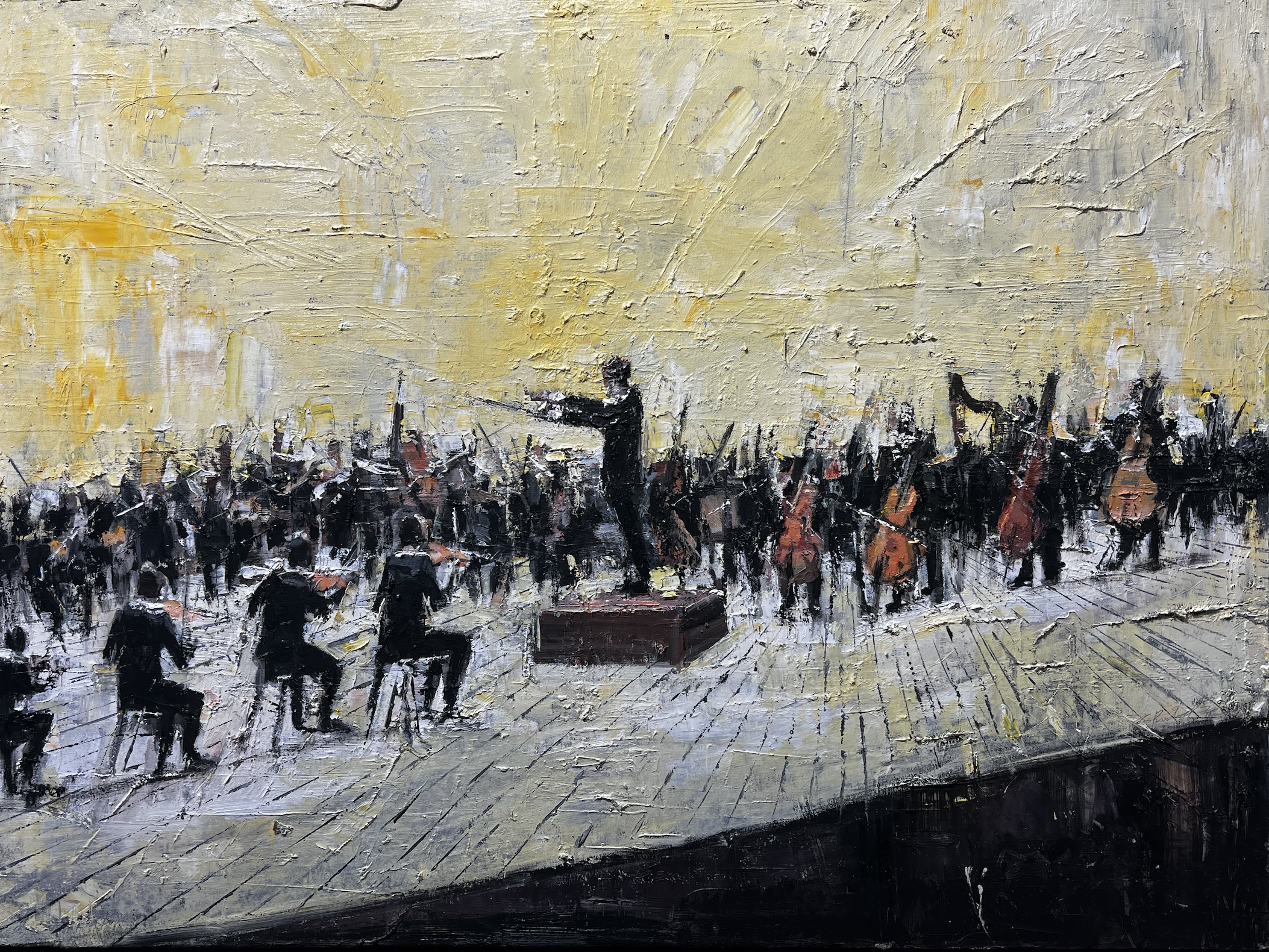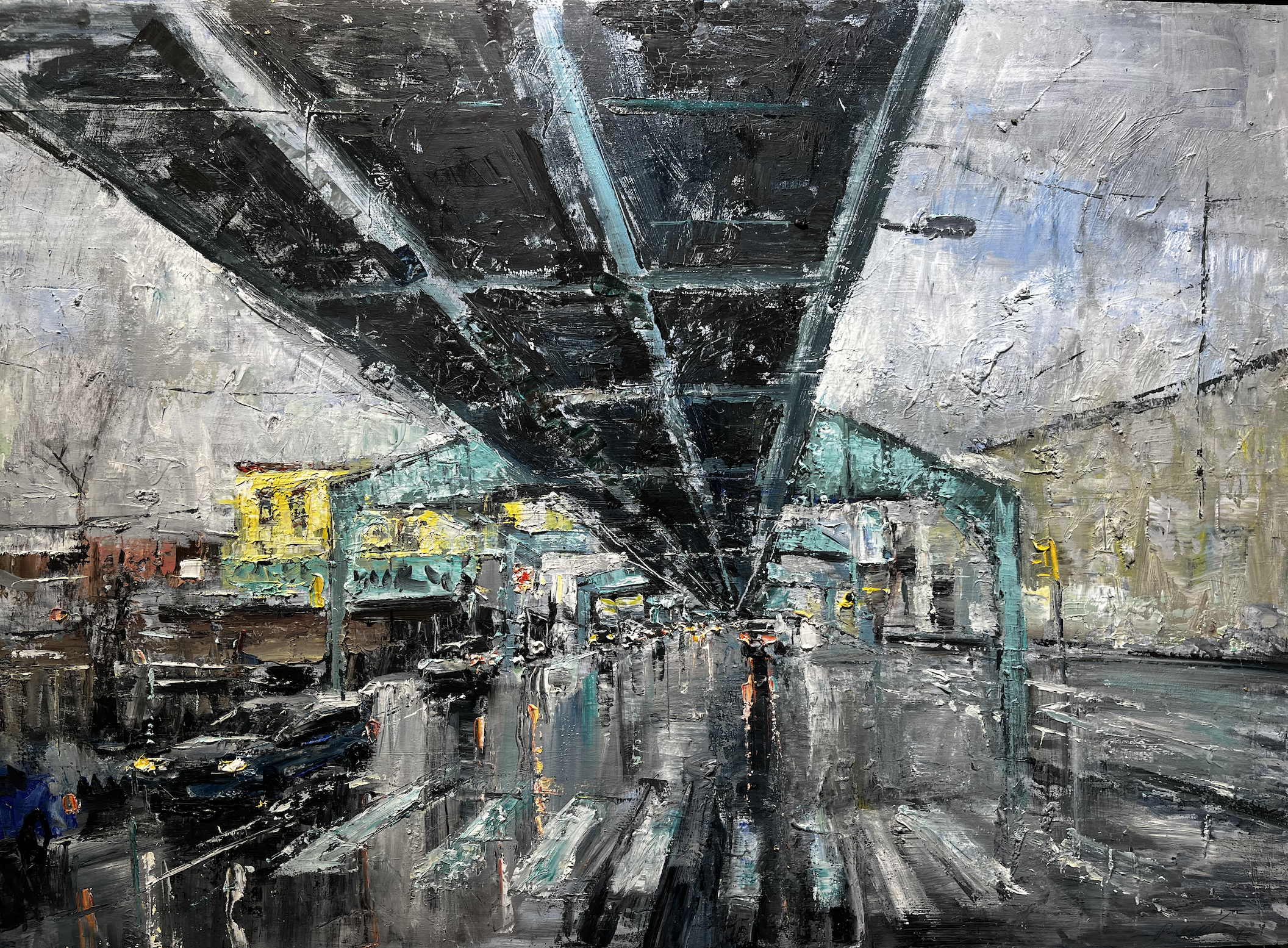Gregory Prestegord
F.A.N. Gallery
221 Arch St.
Philadelphia
Nov. 21, 2024
I could’ve seen pretty much any American city in Gregory Prestegord’s smeared, impressionist portrait of a rainy underpass. But I immediately knew what I was looking at: “El Bad Lands with No Junkies.”
That’s Prestegord’s title for his artistic depiction of a Kensington stretch known primarily, thanks to nonstop news headlines, as Philly’s “opioid crisis epicenter.” Seen inside the F.A.N. Art Gallery as part of a series of impressionist takes on Philadelphia scenery — like Rittenhouse at night, South’s Italian Market, or an eagle flying over City Hall — the teal-blue view of the Conrail tracks from below was the only vista I recognized as Philly-specific.
Other bleary landscapes on exhibit of downtown roadways glimmering in the rain or trains chugging over distant, skyscraper-packed skylines could easily be mistaken for any other American city impacted by mid 20th century urban renewal. I had to triple check that I wasn’t looking at rainy visions of Brooklyn and Manhattan, for example.
So why was this underpass, stripped of all the details that define its detritus-laden identity, so easily placeable?
In May, Mayor Cherelle Parker’s administration launched the first phase of the latest initiative to shape up Kensington Avenue by removing a homeless encampment estimated to hold more than a third of Philly’s unhoused population. I took the subway over mid-morning that day to watch how the cops cleared out the site. By the time I got there, the usual scenery of tents, needles and down-and-out people had been seemingly washed away with the rain. What I remember most was the bright yellow caution tape stretched around the public space, an absurd ribboning of light amid a picture of layered devastation.
I don’t know when Prestegord produced the above artwork. At first I felt confused by his apparent artistic displacement of people — was he not treating Kensington’s complicated community much as Mayor Parker had by disappearing them from the land?
But by focusing on infrastructure as landscape, Prestegord actually subverts the potential for erasure by capturing a fleeting vision of a long evolving story.
Through an impressionist lens, Prestegord reminds us of the humanity of place even in the most dire of circumstances. Through deindustrialization and demolition, a world of empty warehouses and opioid exchange was built. Even though Prestegord’s painting is void of people, it is filled with the modern motions of everyday life. Beyond the despair chronicled in semantically sensationalist info outlets like “Citizen” are hues of humanity: The red and orange lights of passing cars bleed color onto glassy streets, and the dingy tans of store facades foster a multi-shaded sky muddled with polluted blue.
The corruptive power of that yellow caution tape from my memory is, probably incidentally, repurposed in this picture as sunshiny street signage. The most obvious source of vibrance is stored within the borderlines: A white crosswalk lining the foreground of the image reflects the azure train tracks above, which stretches across the cloud cover like a rainbow of gridding.
There’s a hint of tunnel vision: This is a portion of land limited and controlled by government perspective. It’s unclear where this patch of development will go next — though next to the shit- and syringe- littered streets are some of the best Vietnamese iced coffees you’ve ever tried. Gentrification — and all of its culinary glory — is already shifting the visual identity of one of America’s most demonized neighborhoods.
Though impressionism has been historically utilized to capture the ephemeral beauty of nature, Prestegord relies on chunky, unblended color and natural light to note the transient beauty of the underpass. That’s why the title of this piece feels just as genius as its open composition; “El Bad Lands with No Junkies” equates the home of an open air drug market to the open air of the Midwest. Prestegord is, like filmmaker Terrence Malick, spinning human-informed art out of a rugged reality. Even if it looks like the train tracks stretch on forever, Prestegord’s picture implicitly reminds us that there’s a future where the sidewalk ends.
Gregory Prestegord’s works are showing through the end of November at F.A.N. Art Gallery. Find out more — including open exhibit hours — at the gallery's website here.









